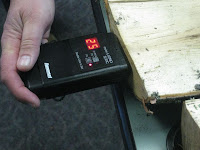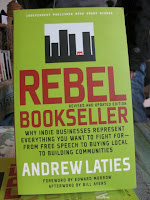I'm at the bioneers conference in Anchorage. Valerie Barber and Meg Burgett from the
Cooperative Extension are doing this workshop. I went to the Alaska Food Challenge workshop first, but didn't pull out the computer. I have pictures and notes though and will put it up later. [I'm not going to proof this carefully so I can get it up and go to the next session, sorry.]
 |
| Meg Burgett |
This one is on how to be sustainable with a wood stove.
Natural gas prices make natural gas the cheapest way to heat, but it's a finite resource.
Fairbanks is using a lot of wood, but they also have air quality issues.
When is Wood Cost Effective? Oil about $37/MBTU . Gas is about 4/15/MBTU
Wood about $15/MBTU, Electricity about $44/MBTU
Other factors to consider
1. The stove and cost to pay back
2. Size and quality of insulation in home
3. Wood fuel availability
4. Costs, including transportation
5. Storage space for wood - needs to be stored properly, needs a cover but open on the side to dry out properly
More costs than $ - exercise
Cost comparisons - (gas on chart 2X the chart) but gas still much cheaper.
Rich Siefert chart -
Availability and costs of wood fuel options
Cords, chips, pellets - Fairbanks has a factory, most in Anchorage coming from Georgia or Canada?
Why Burn wood:
Can be cost/efficient
Reduces use of fossil-nonrenewable fuels
Supports local jobs and local economy
Reduces impacts from green house gases
Personal choice more independence for you and family - especially off the grid
Enjoy activities
Best Practices
Choose the right applicance for you and your home
Understand how to properly use your appliance
Properly locate and install appliance
Use only high quality food
Clean and maintain your appliance regularly - if using <20% moisture, burns much cleaner
Choose the right appliance
Pre 1991 before regulations
EPA certified non-catalytic
EPA ertified catalytic
Wood/biomass
Masonry stores
Old stoves - less than 20% efficient, safety hazard. Post 1991, required to meet EPA standards. All certified stoves labeled.
Catalytic Wood stoves - Large, well insulated fireboxes
Costs more to start - $2200- $5000 - only can burn wood. maintenance costs up, have to replace every 2 or 3 years, tho less if more efficient.
Non-catalytic - $1800 , not counting the pipe - hot short fires, nice flame for watching, most efficiently with short hot fires.
Wood or Biomass Pellet - good, but you do need electricity. Extremely efficient @ 90%. About $2-3000. No local pellets, yet in Anchorage. Fairbanks and Delta have them.
Outdooor Woodburners, least efficient, but lower fire risk to burn house. Buring hot for long periods, large logs, but people burn garbage. Surrounded by water that goes to house. Low efficiency. Up to 12 cords a year and can produce a lot of smoke. Neighbors not happy at all. Not good for dense urban areas.
Masonry stoves - hold and radiate heat for a long time. Massive heavy structures, best to plan building new home and plan house around the stove. $5-15,000 for the cores and not made here. Can use brick, cement, tiles, etc.
Locating your stove
Put as close to center of space to heat.
Account for space between stove and walls and traffic patterns

Maximizing the Heat - best against an interior wall with masonry around it.
Avoid exterior walls
Avoid external chimneys, straight up,
Proper installation
Insurance costs more.
High Quality Wood
SCentral - cords most available.
Support local wood collected within 50 miles from harvest
Right moisture content <20%
Cordwood Primer
128 Cubic Feet (not counting spaces in between) 4'X4'X8' - standard pickup holds 1/2 a cord
 |
| Moisture meter |
Moisture content - there's a moisture meter - internet - $40, maybe a stove store has one
Split into 6" pieces, stacked off the ground, not rotting bottom. Cover, tarp isn't great.
In Anchorage about 6 months to get green wood to 20%. Away from structures - rodents and insects into the wood.
 |
| Valerie Barber |
Look at wood - lighter in color, feels lighter and should have cracks and splits
Distinctive clank, not a thud when you hit it
Not all trees the same
Best is birch, worst aspen and cottonwoods. Works ok if dry and in masonry stove.
How Wood Burns in your Wood Stove
1. All the water in the wood heats up and evaporates off
2. Wood begins to burn or 'break-down" at around 400˚F and release....
Clean and maintain yearly
Wood's renewable, but only when trees replanted and regeneration is encouraged.
Problems here because of climate change - the warmer it gets the less some of the trees grow. Related to drought stress. We can produce new trees, but not natural gas and oil.
We're watching a
Canadian movie now on the best way to burn wood in your stove. The content's really good (did you ever make a knotted piece of newspaper?), but the actors are awful.
Need to do homework before buying - check emissions to see efficiency. Lower the emissions, higher the efficiencies. Catalytic stoves not designed for long fires. Hot and quick.
Here's a
website they recommended.





























